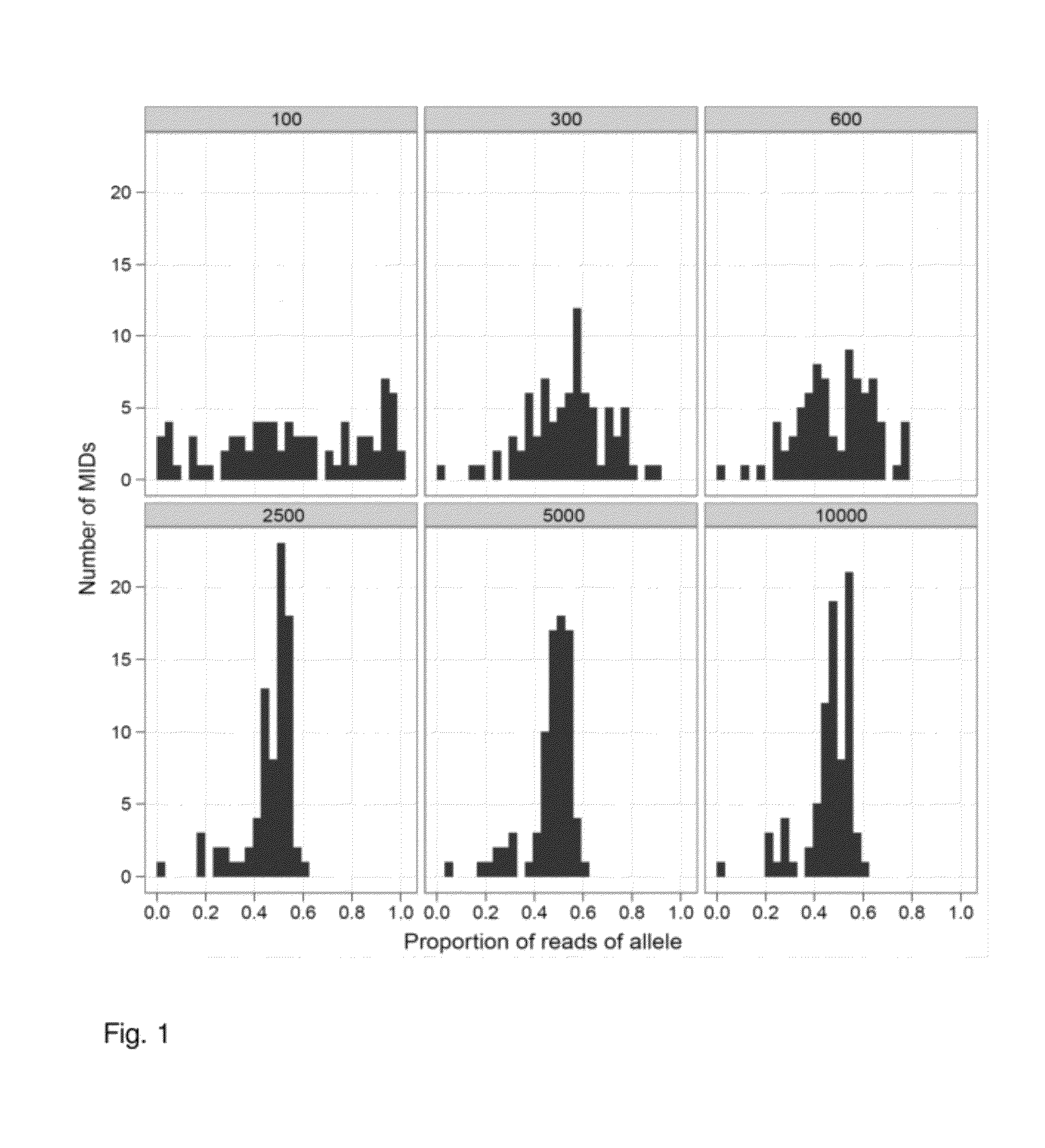Increasing confidence of allele calls with molecular counting
a molecular counting and confidence-boosting technology, applied in the field of gene research, can solve the problems of significant reduction of allele calling confidence and misleading coverage alone, and achieve the effect of improving the analysis of many different nucleic acid sequencing applications
- Summary
- Abstract
- Description
- Claims
- Application Information
AI Technical Summary
Benefits of technology
Problems solved by technology
Method used
Image
Examples
examples
Methods
[0097]Two identical samples of mouse genomic DNA were labeled with adapters. One sample used an adapter that has a redundantly synthesized region consisting of 7 bases (RYBDHVB), each of which could be one of two (for R and Y positions) or three (for B, D, H or V positions) bases (or a total of 972 different sequences) followed by the bases ACA; the second sample used an adapter that has a redundantly synthesized region consisting of 7 bases (RYBDHVB), each of which could be one of two (for R and Y positions) or three (for B, D, H or V positions) bases (or a total of 972 different sequences) followed by the bases ACG. Note the bolded underlined bases correspond to a synthetic polymorphic site. In these adapters, the sequence RYB serves as the DBR region and the DHVB serves as the MID. Thus, there were 12 possible DBR (2×2×3) codes and 81 different MIDs present (3×3×3×3).
[0098]The two samples were then mixed together in equal amounts to create, in effect, a perfect 50 / 50 heter...
PUM
| Property | Measurement | Unit |
|---|---|---|
| temperature | aaaaa | aaaaa |
| temperature | aaaaa | aaaaa |
| polymorphic | aaaaa | aaaaa |
Abstract
Description
Claims
Application Information
 Login to View More
Login to View More - R&D
- Intellectual Property
- Life Sciences
- Materials
- Tech Scout
- Unparalleled Data Quality
- Higher Quality Content
- 60% Fewer Hallucinations
Browse by: Latest US Patents, China's latest patents, Technical Efficacy Thesaurus, Application Domain, Technology Topic, Popular Technical Reports.
© 2025 PatSnap. All rights reserved.Legal|Privacy policy|Modern Slavery Act Transparency Statement|Sitemap|About US| Contact US: help@patsnap.com



